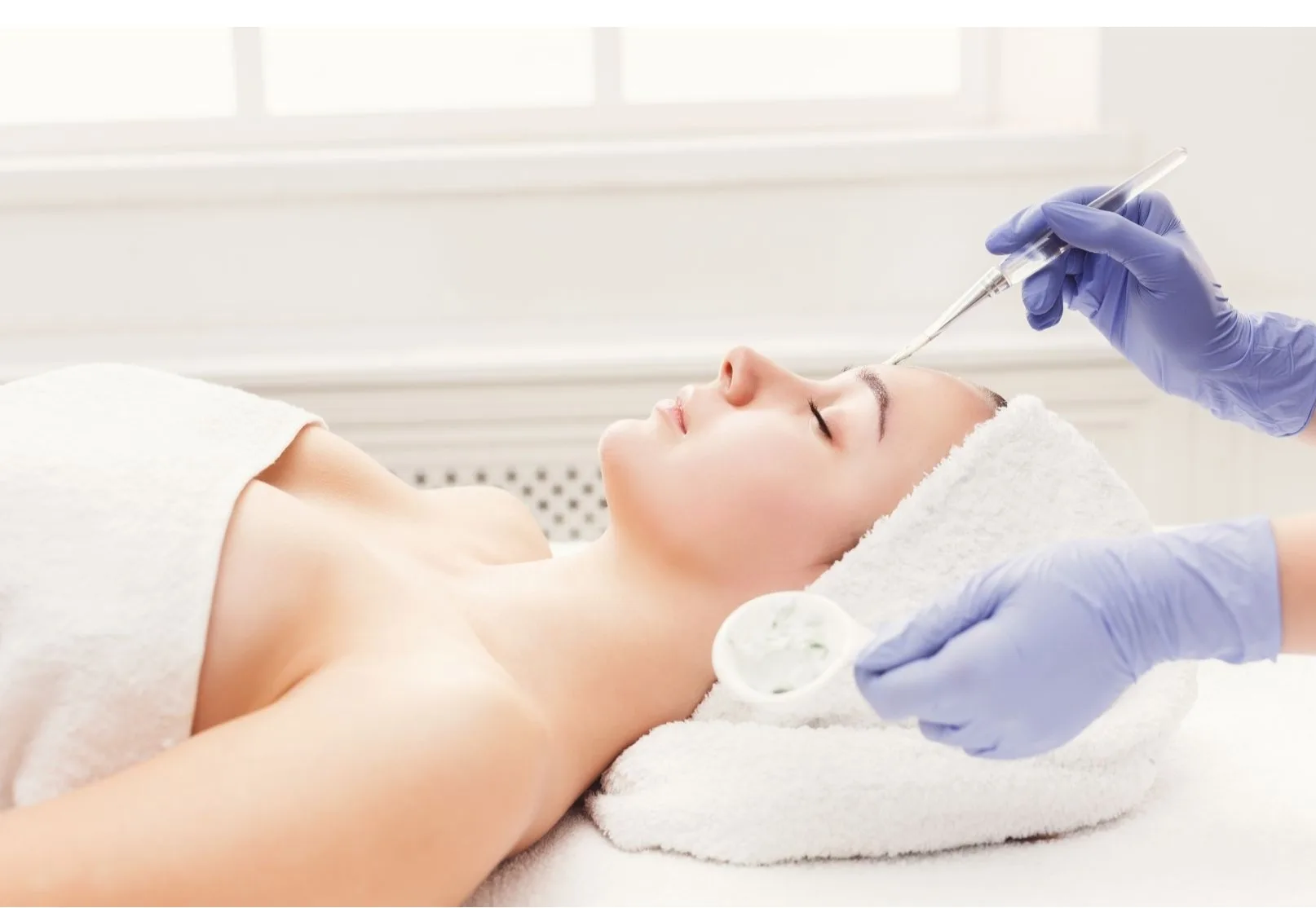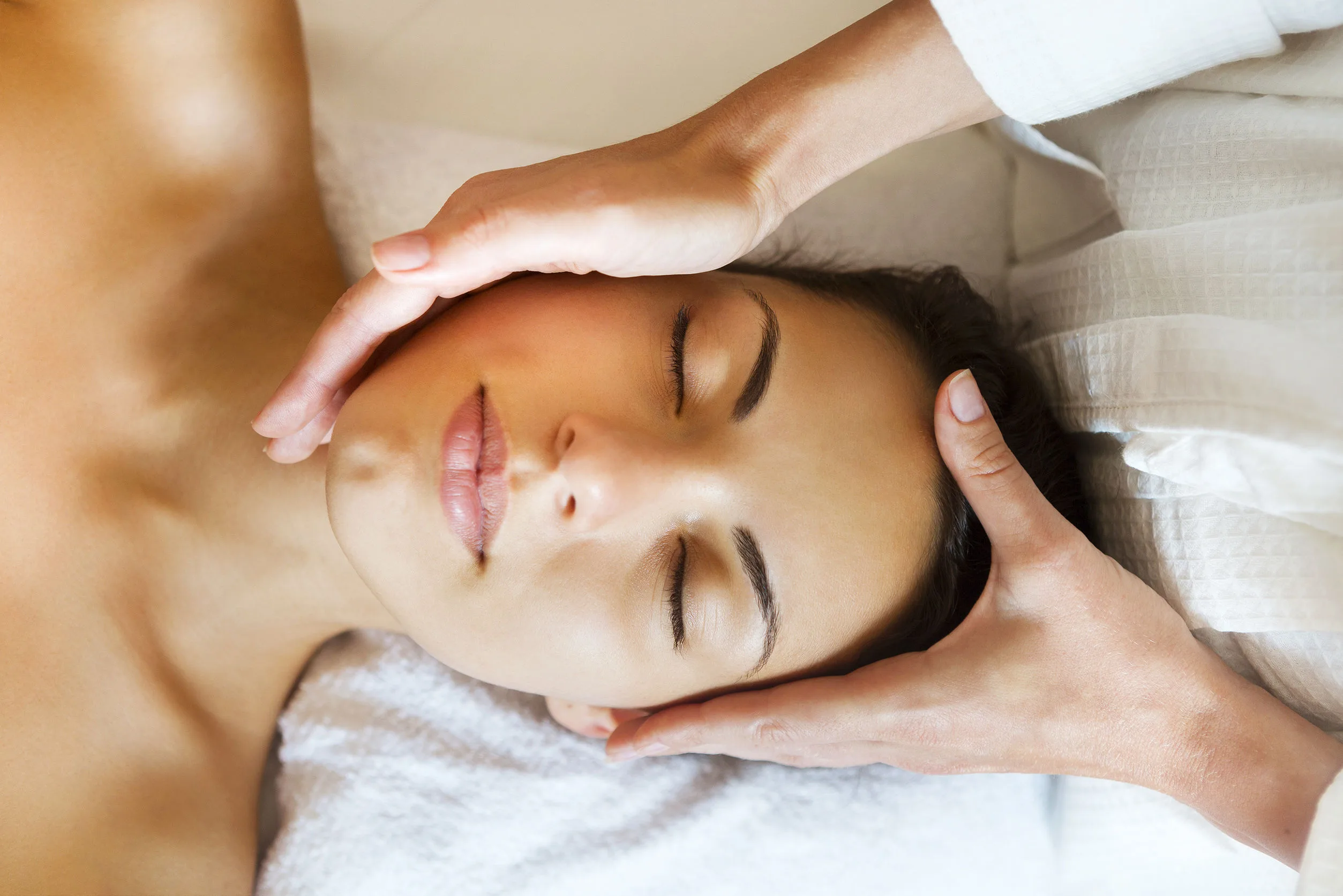
How Enzyme Peels Are The Path To Glowing Skin
If you’re not yet familiar with enzyme peels, we’ll begin with this: You could potentially find every ingredient for the peel in your kitchen right now. (Which, for the record, isn’t an invitation to try a DIY peel.)
Essentially, it’s one of the gentlest and safest skin treatments on the market. Compared with chemical peels or laser resurfacing (enzyme peels use real fruit enzymes to help break down dead skin cells without burning or killing any living cells in the process. It’s basically magic… with a touch of pomegranate and other edible ingredients. This makes enzyme peels generally safe for all skin types, especially those with sensitive skin, and even pregnant women.
Intrigued? We don’t blame you.
Find out everything you need to know before considering an enzyme peel, below.
What Is an Enzyme Peel?
Like any other “peel,” an enzyme peel is a facial treatment meant to rid your complexion of dead skin cells for glowier, more gorgeous skin. The enzymes used in enzyme peels come from fruits and vegetables such as pineapple, papaya, and pumpkin. These proteolytic enzymes help to break down proteins—including keratin proteins in the outer layer of the skin. This helps dead skin cells slough off, leaving the skin smoother and softer, with decreased discolorations.
Besides leaving skin softer and smoother, there are tons of other reasons to seek out an enzyme peel.
Benefits of Enzyme Peels
As previously mentioned, enzyme peels are safe for all skin types—even those who find that their skin gets easily irritated. Enzymes are a great choice for those with sensitive skin who can’t tolerate alpha and beta hydroxy acids. They provide a gentler way to exfoliate and brighten the skin.
Generally, with enzyme peels you’ll experience less irritation than you would with more “intense” treatments like microdermabrasion or laser resurfacing treatments—while still reaping major benefits. Most notably, you’ll likely notice a boost in luminosity and hydration (AKA, saying buh-bye to dry, dull skin).
Other benefits include an increase in collagen production, better texture, smoothing of fine lines and wrinkles, reduction of scars, and more. Many people report brighter, glowier skin after enzyme peels, with cleaner pores and reduced blackheads and blemishes. They’re budget-friendly, and you can also expect to see immediate results.
And remember: Enzyme peels are safe and suitable for people who are pregnant or breast-feeding because the enzymes can be absorbed into the skin—and you don’t have to worry about any harmful chemicals, toxins, or side effects with enzyme peels. (Of course, we always recommend seeing a medical professional prior to getting the treatment.)
How to Prepare for Enzyme Peels
Because enzymes are generally safe and gentle for the skin, you don’t have to worry about “prepping” your complexion too much. That said, it might be a good idea to refrain from makeup for the few days leading up to your enzyme peel so your pores are as clean and “unclogged” as possible. You will also want to avoid things like tanning beds and sunburns. And make sure you don’t have any open wounds on your face, which could get irritated and inflamed by an enzyme peel.
The Downsides
Although you’ll usually see results immediately with enzyme peels, the one major downside is that because they’re gentler than other chemical treatments, the effects simply aren’t as intense or long-lasting. The results may be less dramatic compared with alpha and beta hydroxy acids. Alpha and beta hydroxy acids are generally more potent, so they can work more deeply and intensely, with more dramatic results. But there’s also more potential for irritation.
For instance, it could take you multiple enzyme peels to see the same results you’ll witness from one chemical peel. Enzyme peels will still get the job done, but it’ll likely take more time and effort. And while enzyme peels will improve mild to moderate signs of aging, people with more significant wrinkles or imperfections will probably see better results from a deeper chemical peel.
It’s also important to confirm that you’re not allergic to any of the ingredients prior to your enzyme peel—because an allergic reaction certainly wouldn’t be the optimum result. Enzyme peels can also exacerbate things like acne, dermatitis, or Herpes outbreaks, so it’s a good idea to consult a professional before making any rash—no pun intended—decisions.
Aftercare
There’s little to no downtime or recovery involved after an enzyme peel, since they typically work without damaging or irritating your skin. It’s likely all you’ll experience is some mild tingling and potentially slight redness, so you can basically go straight from your esthetician’s office back to work. (These are the perks of all-natural ingredients like pumpkins and pineapples, I suppose.)
One thing you should take note of is the fact that—like other facials and treatments—your skin may be more sensitive to sun afterward, so it’s a good idea to avoid the rays for a week or so after your enzyme peel. And remember: You should be slathering on sunblock either way, but especially if your skin has just had its top layer more or less sloughed off.
The Final Takeaway
Across the board, enzyme peels are seen as a safe and generally risk-free skin treatment. If you’re sick of chemical irritants or just looking for something all-natural for your skin, they’re an excellent option to consider.
That said, if you’re looking for more immediate results—and your skin isn’t easily irritated—a powerful chemical exfoliant might be best for you instead. Either way, it’s best to consult a professional if you’re not sure about your skin’s unique needs.
Botanica has your back covered for all of the above! Call us today and one of our skin care experts can help you answer the question if enzyme peels are the right facial for you. Book a facial today at 727-441-1711 or make one online here.
Love,
Gen



Leave a Reply